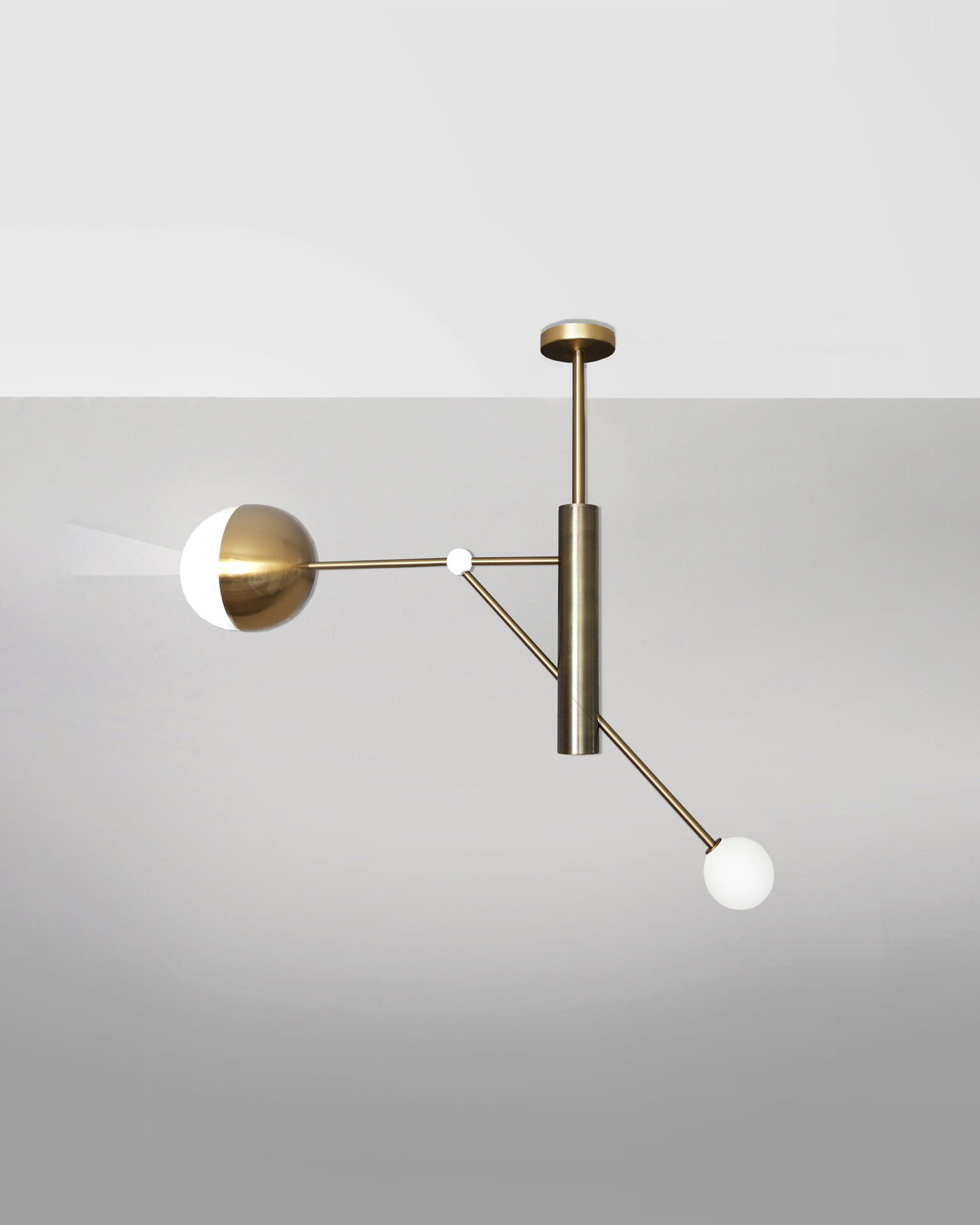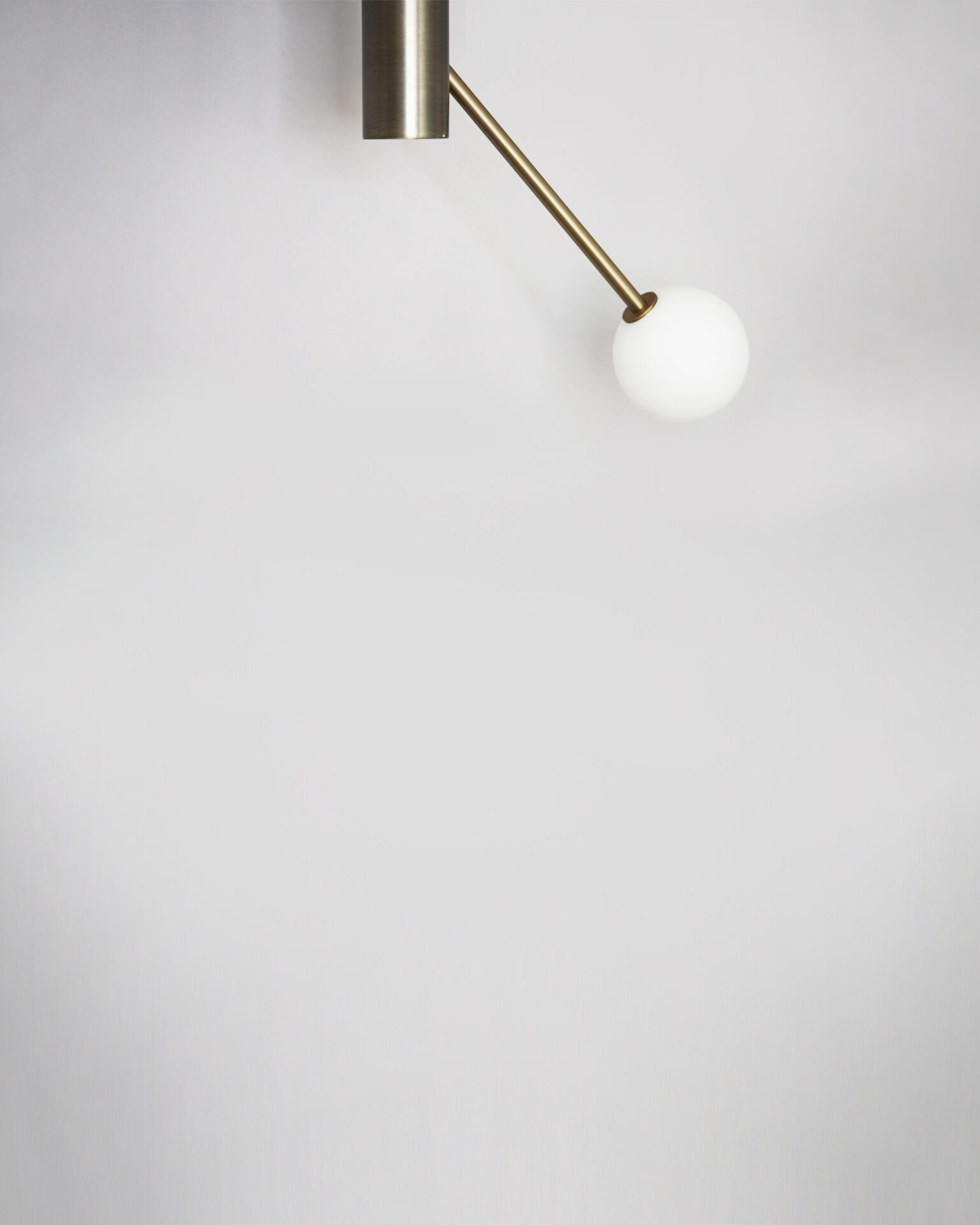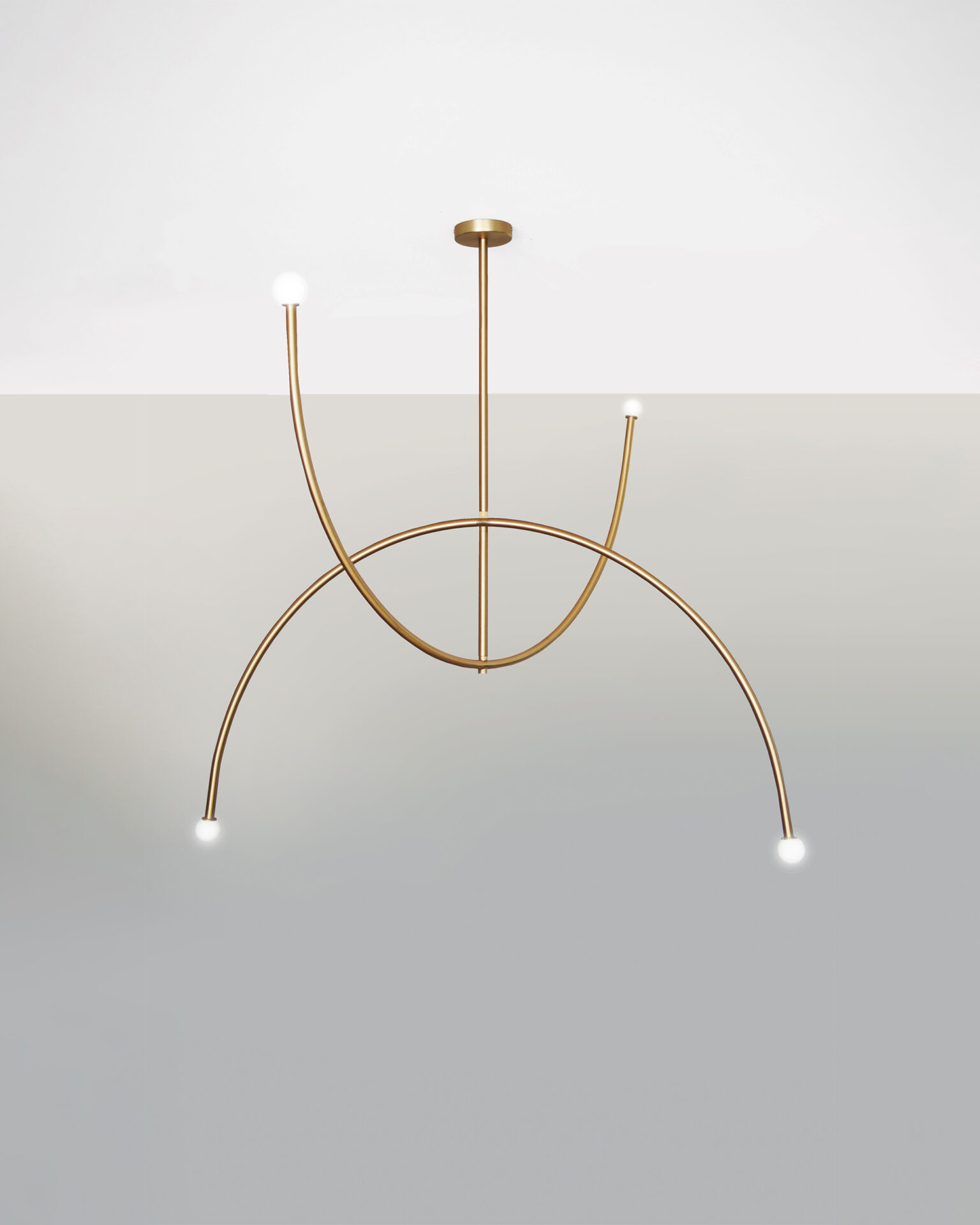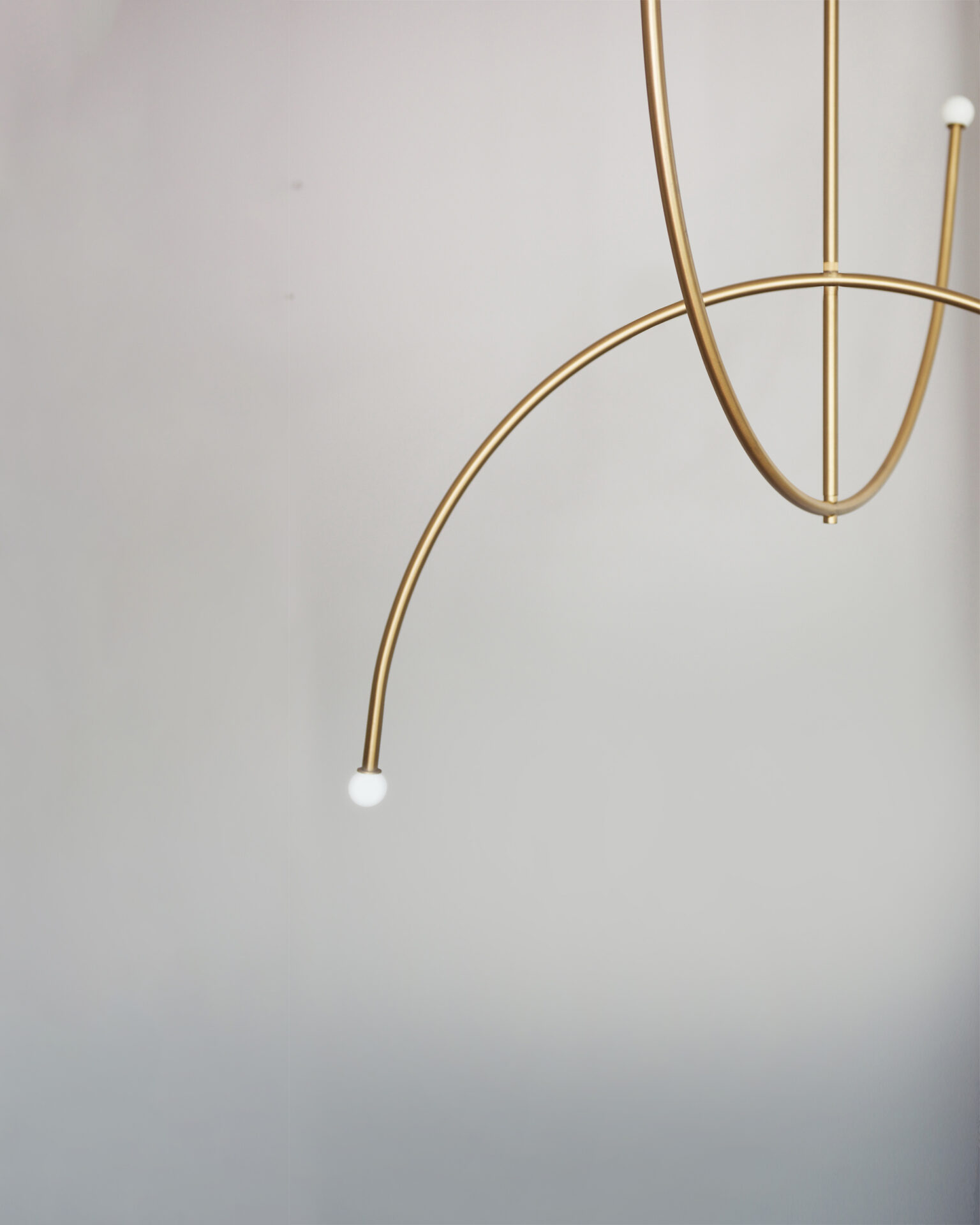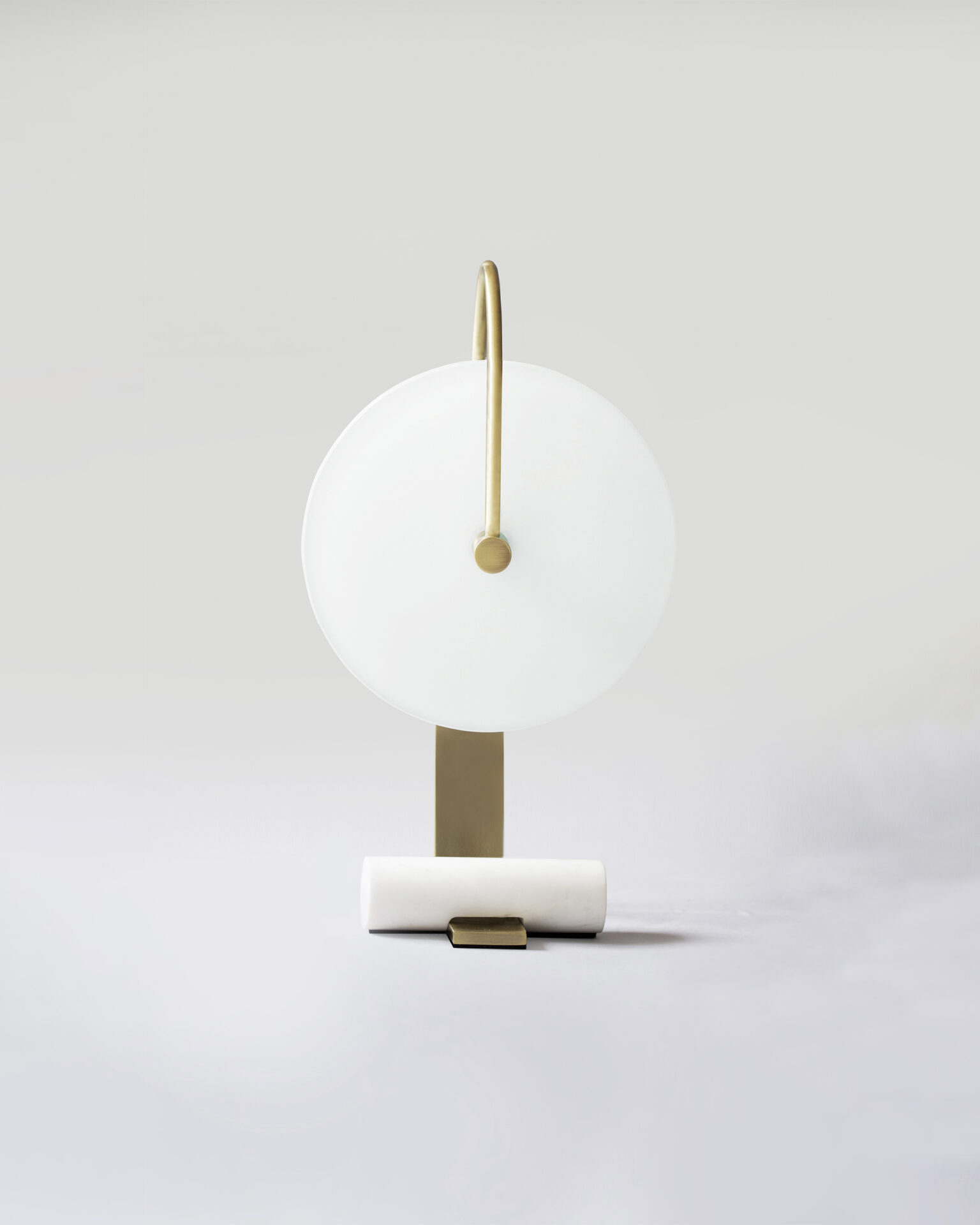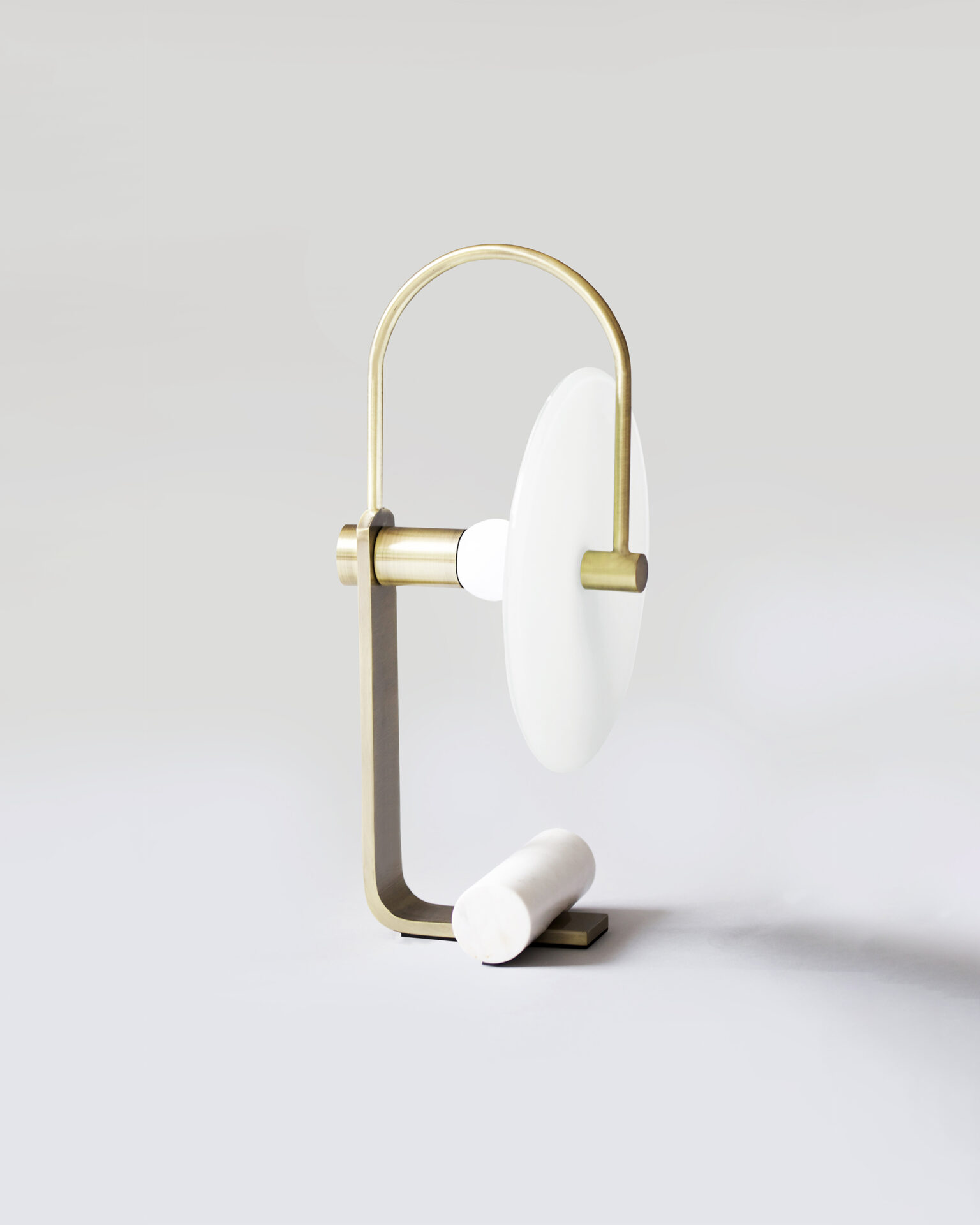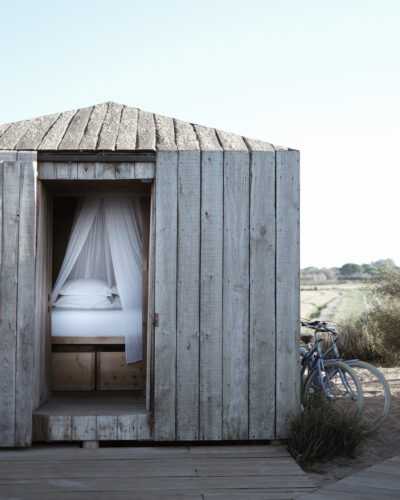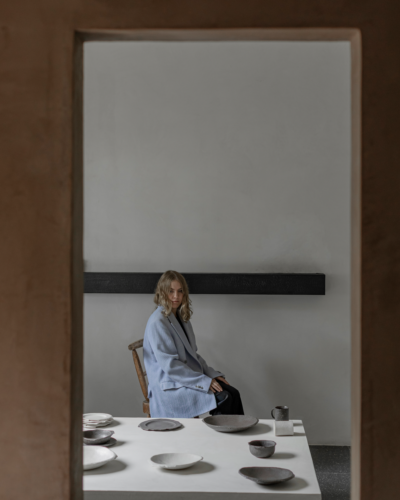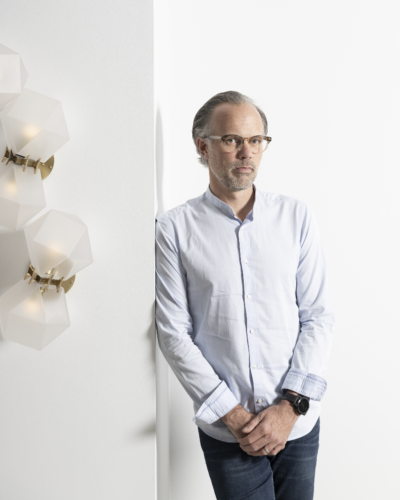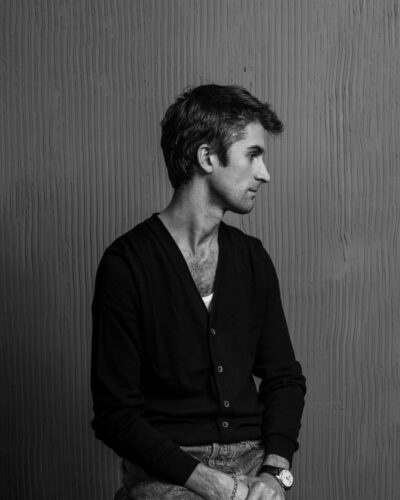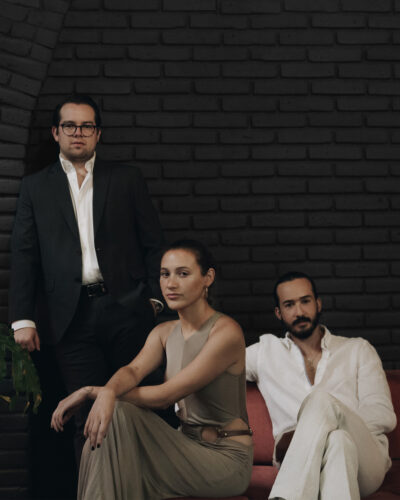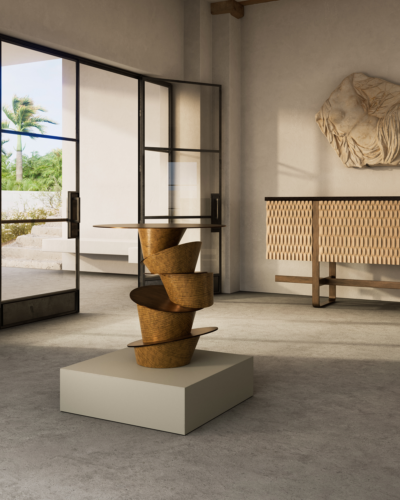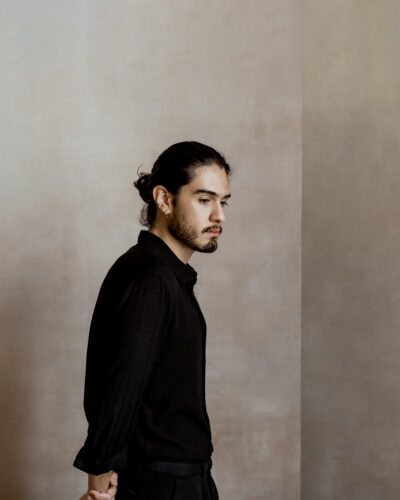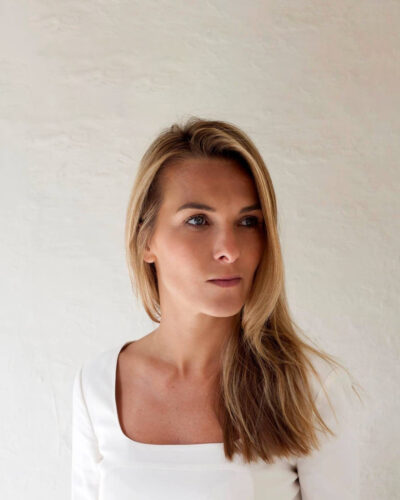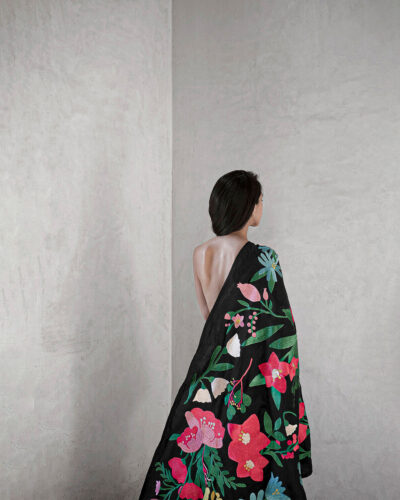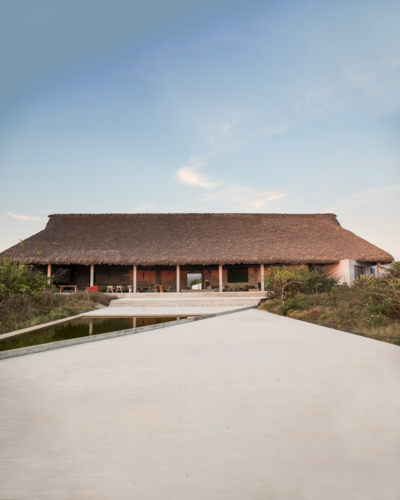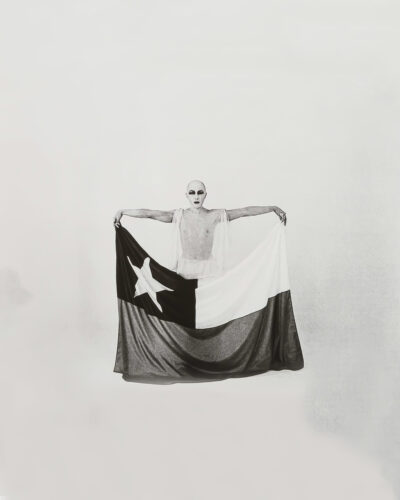This website uses cookies so that we can provide you with the best user experience possible. Cookie information is stored in your browser and performs functions such as recognising you when you return to our website and helping our team to understand which sections of the website you find most interesting and useful.
Listen to the conversation between Rosanna and Square in Circle.
In The Story of Art, E.H. Gombrich writes that Bauhaus, “got rid of the tasteless knick-knackery of the 19th century and streamlined design for the 20th century” – and Square in Circle, a London-based lighting design studio founded by Alesia Sirokina, continues along this path laid out by the Bauhaus school in 1919. “I’m very interested in the Bauhaus, in the 1920s and the avant-garde – as their designs are based on pure geometric forms,” notes Sirokina – whose designs could be characterized as Geometric Luxury. At first glance, designs from this time consist of clean lines, strict geometries and a minimalist approach – but, upon further inspection, one discovers their humanity and personality, a sense of wit and playfulness.
As the studio’s name suggests, geometry is elemental to its aesthetic – though many of Square in Circle’s designs also allude to the body in motion. “All of the names of my products refer to geometry or dance,” notes Sirokina, whose lighting designs are the result of this unlikely juxtaposition. The fantastical costumes of Oscar Schlemmer’s ‘Triadic Ballet’ (1919) – in which the figure is transformed into a series of discs, spheres and otherworldly forms – have been particularly influential on her work, igniting the spark of inspiration for the studio’s first ever design – ‘The Dance of Geometry’.
“The shape of this lamp, [The Dance of Geometry] is like a person – with a skirt, a body and a head.” The figure – abstracted and simplified – is composed of pure geometries that have been stacked and assembled to create a perfect, mechanical form. Like many others by Square in Circle, this lighting design is imbued with a strong sense of retro-futurism – both looking back and reaching forward – evoking visions of the future from decades past.
Inspired by another of Schlemmer’s Bauhaus ballets, the ‘Pole Dance’ pendant lamp also makes reference to the human figure – that of a dancer whose movements are exaggerated by multiple poles that follow the lines and axes of the body. Crossing and intersecting as the dancer moves, the poles creating new and dramatic compositions; Sirokina notes that, “As soon as I saw [this dance], I thought – I want to do that in lighting.”
“With minimal design it’s crucial to get the proportion right”
The Russian artist, graphic designer and typographer El Lissitzky (1890 – 1941) was an important influence on the Bauhaus movement, and Sirokina’s designs share a similar sense of space and composition. Clean, energetic and futuristic – the spatial relationships that El Lissitzky developed are reimagined by Square in Circle – translated into three dimensions and manifested in metal, glass and marble.
Though Bauhuas was almost entirely non-representational, elements of astronomy gradually became part of the aesthetic – which is something that can also be observed in Sirokina’s designs. Like constellations – dots of light scattered overhead – the pendant lights are designed to feel as if they might spin, drift or rotate, imitating the movement of the stars and planets that slowly revolve in space. A light and airy design composed of two intersecting curves, the ‘Double Arch’ has a pleasing simplicity – it is two lines drawn in space. Punctuated at both ends with small, white lights, each curve seems to trace the movement of the light, like the trail that follows behind a shooting star.
The ‘Universe’ table lamp features a disc of opaque white glass that is backlit to achieve a soft, lunar glow. The disc floats, held in place by a brass bracket that pierces its centre before rising up and arching back. The slim, lightweight metal frame and large illuminated floating disc are held in place by a thick white marble cylinder that acts like a paperweight. Both simple and complex, the design brings to mind the orreries of the 19th Century – small mechanical models of the solar system that predicted the movement and positioning of the planets – where each piece is perfectly positioned in relation to the others, and every element placed with the greatest precision and engineering.
A concise and well-defined palette of materials is used throughout the collection, and the subtlety of the brand’s signature palette is enriched by layering and combining tones and textures. “I always use two or three metals in a single design because I like to create contrast,” notes Sirokina, who often mixes gold-toned brass with gunmetal grey, or multiple shades of bronze. These shifts and variations become more apparent as you move around each piece: brass may dominate from one angle, but grey metal will be dominant from another.
“I had a vision in my head – I knew exactly what materials I wanted to use”
Creating complexity from simplicity, the Icon table lamp has a strong sense of three-dimensionality, with vertical lines and flat planes that coalesce to form an abstracted cityscape. Moving around the object is akin to walking around a city – as one composition fades out of sight, another appears in its place in an ever-evolving scene. This sculptural quality that is found throughout the pendants and table lamps is transmuted – flattened – to create a range of graphic wall sconces. Hanging against the wall like a painting, these lights further simplify the studio’s geometric sensibility; simple interplays of line and shape, they are at once art and design, functional and decorative.
Sirokina’s prior experience as an Interior Designer and Interior Architect informs the Square in Circle aesthetic – however, in the spirit of the Bauhaus, her work is also informed by many other fields and disciplines. “I love theatre and ballet, but I actually come from a musical background – I went to music school rather than dance school, where I learnt to play piano and violin.”
One can sense an innate musicality in Alesia Sirokina’s Bauhaus-inflected designs – each of which has a palpable sense of rhythm. Much like musical notation, Square in Circle’s visual language consists of only a few shapes, volumes and materials – yet these can be combined in ever new and interesting compositions. Speaking to the design of the 1920s as much as the 2020s, Square in Circle has a timeless appeal that draws upon the emotional quality of music, the poetry of the body in motion, and the simple perfection of geometry.
